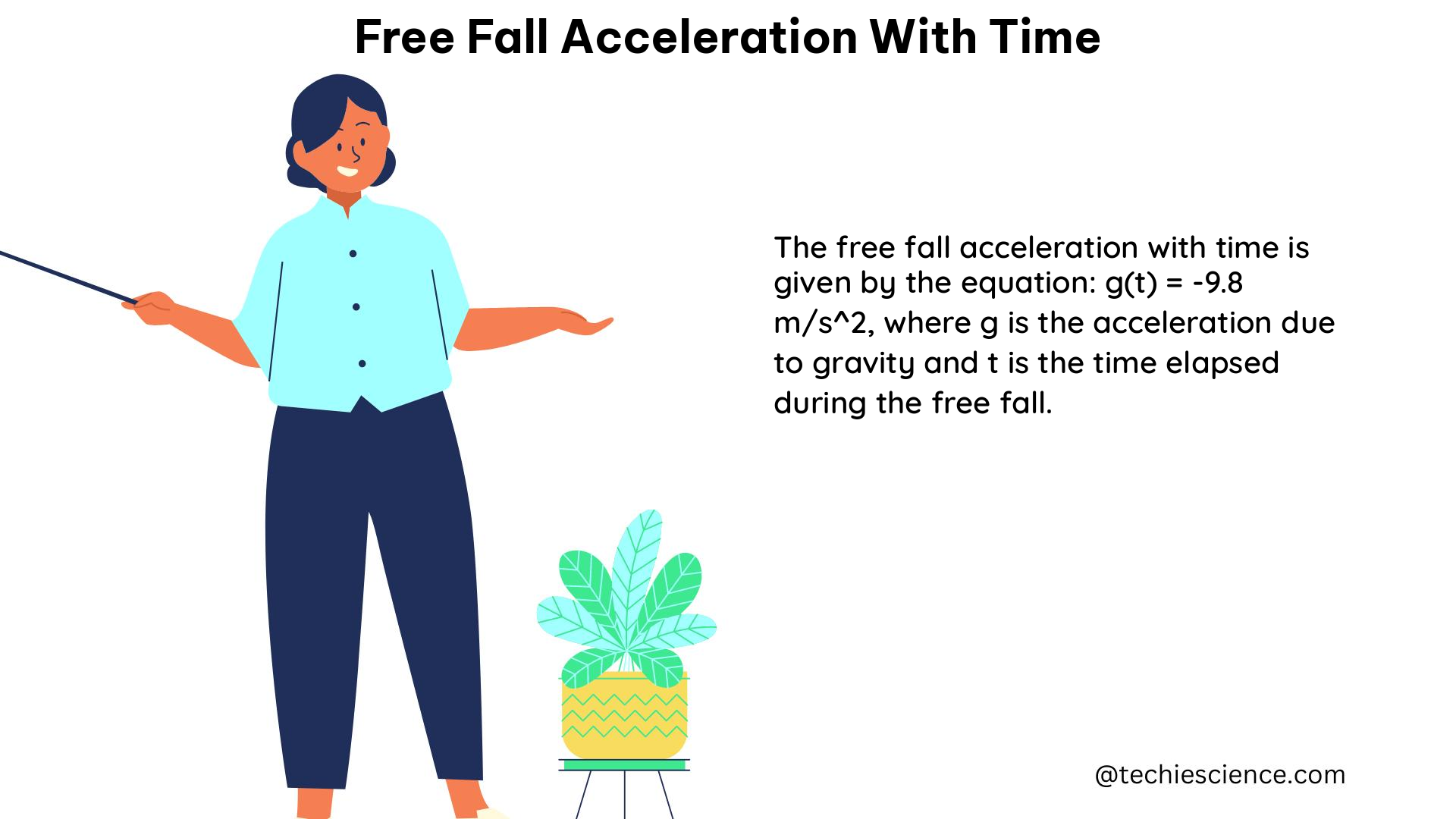Free fall acceleration with time is a fundamental concept in physics that describes the motion of an object under the influence of gravity. The acceleration due to gravity, often denoted as ‘g’, is approximately equal to 9.8 m/s² on the surface of the Earth. This acceleration is constant and affects all objects equally, regardless of their mass.
Understanding Free Fall Acceleration
When an object is in free fall, its velocity changes linearly with time. This can be expressed mathematically as:
v = at + v₀
Where:
– v is the final velocity
– a is the acceleration due to gravity
– t is the time
– v₀ is the initial velocity
If an object is dropped from rest, its initial velocity (v₀) is zero, and the equation simplifies to:
v = at
This means that the object’s velocity increases by a constant amount (a) for each unit of time (t). For example, if a = 9.8 m/s², the object’s velocity will increase by 9.8 m/s every second.
Experimental Determination of Acceleration Due to Gravity

The acceleration due to gravity can be determined experimentally by studying the velocity of a falling object as a function of time. This involves measuring the position of the object at regular intervals and calculating its velocity and acceleration.
Experimental Setup
- Obtain a long, straight track or a vertical drop setup.
- Attach a cart or a small object to the track or release it from a known height.
- Use a motion sensor or a high-speed camera to record the position of the object at regular time intervals.
- Analyze the position-time data to calculate the velocity and acceleration of the object.
Data Analysis
- Plot the position-time data and fit a linear regression line to the data.
- The slope of the linear regression line will give the velocity of the object.
- Differentiate the velocity-time function to obtain the acceleration.
- Compare the experimentally determined acceleration to the accepted value of
g = 9.8 m/s².
The precision of the ruler-fit function can be evaluated and compared to the “best-fit” function as determined by a computer program, such as a linear regression analysis.
Acceleration in Complex Scenarios
In more complex scenarios, such as a skydiver in free fall, the acceleration can be calculated by finding the slope of the tangent line passing through the velocity-time (v-t) graph at the relevant point. This is because the acceleration of an object at any instant is the slope of the tangent line passing through its v-t graph at the relevant point.
Skydiver in Free Fall
- Measure the skydiver’s velocity at different time intervals during the free fall.
- Plot the velocity-time (
v-t) graph. - At any given point on the
v-tgraph, the slope of the tangent line passing through that point represents the acceleration of the skydiver at that instant. - The acceleration may not be constant due to factors such as air resistance, which can affect the skydiver’s motion.
Numerical Examples
- Object Dropped from Rest:
- Initial velocity,
v₀ = 0 m/s - Acceleration due to gravity,
a = -9.8 m/s² - Time,
t = 3 s -
Final velocity,
v = at = -9.8 × 3 = -29.4 m/s -
Projectile Motion:
- Initial velocity,
v₀ = 20 m/s - Angle of projection,
θ = 45° - Acceleration due to gravity,
a = -9.8 m/s² - Time of flight,
t = 2v₀sin(θ)/g = 4.08 s -
Maximum height,
h = v₀²sin²(θ)/(2g) = 20.41 m -
Skydiver in Free Fall:
- Initial velocity,
v₀ = 0 m/s - Acceleration due to gravity,
a = -9.8 m/s² - Air resistance,
F_air = -kv², wherekis the air resistance coefficient - Time,
t = 10 s - Velocity after 10 s,
v = v₀ + at + (F_air/m)t² = -98 m/s(assumingk = 0.25 kg/m)
Conclusion
Free fall acceleration with time is a fundamental concept in physics that describes the motion of an object under the influence of gravity. The acceleration due to gravity is approximately equal to 9.8 m/s² on the surface of the Earth and affects all objects equally. The acceleration can be determined experimentally by studying the velocity of a falling object as a function of time, and the precision of the ruler-fit function can be evaluated and compared to the “best-fit” function as determined by a computer program. In more complex scenarios, such as a skydiver in free fall, the acceleration can be calculated by finding the slope of the tangent line passing through the velocity-time graph at the relevant point.
References
- Acceleration and Free Fall – OpenCurriculum. Retrieved from https://opencurriculum.org/5437/acceleration-and-free-fall/
- EXPERIMENT 2: FREE FALL ANALYSIS Objective. Retrieved from https://www.sjsu.edu/faculty/beyersdorf/Phys50lab/Manual/05-EXPERIMENT%202.pdf
- Free Fall. Retrieved from http://feynman.bgsu.edu/physics/phys1010/Lab%205%20-%20Free%20Fall.pdf
- Projectile Motion. Retrieved from https://www.physicsclassroom.com/class/vectors/Lesson-4/Projectile-Motion
- Air Resistance and Terminal Velocity. Retrieved from https://www.grc.nasa.gov/www/k-12/airplane/termv.html
Hi ….I am Abhishek Khambhata, have pursued B. Tech in Mechanical Engineering. Throughout four years of my engineering, I have designed and flown unmanned aerial vehicles. My forte is fluid mechanics and thermal engineering. My fourth-year project was based on the performance enhancement of unmanned aerial vehicles using solar technology. I would like to connect with like-minded people.